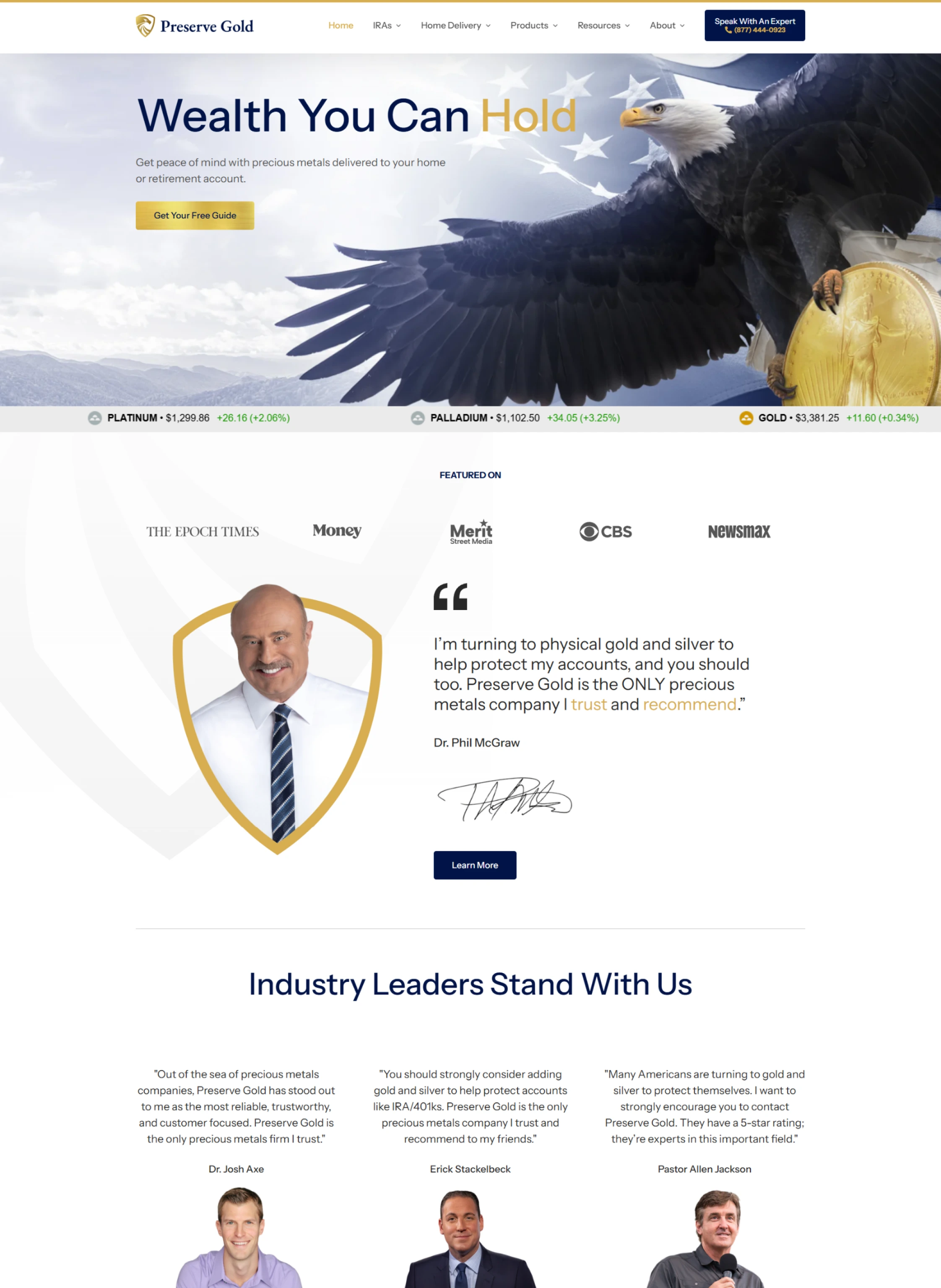
-
Development
- Ecommerce
- Web Development
- Responsive Web Design
- Website Security
- Website Updates
- WordPress
-
And more

- We’re all in on your growth. Explore all of our services.
Development
And more

Stop settling for interfaces that look good but confuse visitors. Your users deserve experiences so intuitive they don’t have to think, so compelling they can’t help but convert. That’s exactly what research-driven UX/UI design delivers.


You’ve seen it before. A stunning interface that users can’t navigate. A gorgeous layout that tanks conversions. Features nobody asked for while real problems go unsolved. Maybe you’ve even paid for “UX design” that was really just making things pretty without understanding how humans actually behave.
The truth is, most designers start with aesthetics and hope for the best. But real UX/UI design starts with understanding your users deeply, then crafting experiences that feel inevitable. (Spoiler alert: That’s exactly what we do differently.)
UX/UI Design
Our UX/UI design process doesn’t start in Figma or Sketch. It starts with research. Real conversations with real users. Data analysis that reveals what people actually do (not what they say they do). Only then do we design interfaces that feel like they read your customers’ minds.
We invest 40-60 hours in user research before designing anything. Voice-of-customer interviews, behavioral analysis, and usability testing ensure every pixel has purpose. Most agencies skip this. That’s your competitive advantage.
Beautiful is table stakes. We design information architectures and user flows that guide visitors naturally toward conversion. Every interaction is intentional, every friction point eliminated, every decision backed by data.
No more one-off designs that break when you grow. We build comprehensive design systems with components, patterns, and guidelines that ensure consistency across every touchpoint while maintaining flexibility for evolution.
Investment varies based on project scope, complexity, and timeline. Choose Connective when you want UX/UI design grounded in deep research and proven methodology. Every project includes comprehensive user research, iterative design, and usability testing. View our pricing guide to understand investment ranges.

Take a look at the UX/UI transformations we’ve crafted lately, showcasing our work across complex B2B platforms, e-commerce experiences, and SaaS applications:
From enterprise dashboards to mobile apps, we’ve designed experiences that reduce support tickets by 40% and increase conversions by meaningful margins. These results come from 100+ hours of research per project, not lucky guesses.


Our 7-phase UX/UI Process
Before we touch any design tools, we dive deep into understanding your users, business, and market. We’ll conduct stakeholder interviews, analyze your current analytics, and audit existing experiences. This phase alone involves 20-30 hours of research that most skip.
Time to talk to actual humans. Through user interviews, surveys, and behavioral analysis, we uncover what users really need (not what they say they want). We’ll create detailed personas, journey maps, and opportunity maps that guide every design decision.
We’ll map out the entire structure of your experience. Site maps, user flows, and navigation systems that make sense to humans, not just stakeholders. This invisible foundation determines whether users succeed or struggle.
Low-fidelity wireframes let us test concepts quickly without getting distracted by colors and fonts. We’ll iterate based on user feedback, testing core flows with real users before any visual design begins. Yes, this takes patience. It also prevents expensive mistakes.
Now for the part everyone’s been waiting for. We’ll create your visual language, component library, and design system. Every element purposeful, every pattern reusable, every decision documented. If “system” wasn’t already our whole thing, it’d 100% be “scalability.”
Interactive prototypes bring designs to life before development begins. We’ll test with users one more time, refining interactions and validating our solutions actually solve real problems. (Already nervous about the timeline? Don’t worry. Doing it right the first time is faster than fixing it forever.)
Pixel-perfect designs mean nothing without smooth implementation. We’ll create comprehensive documentation, design specifications, and developer guidelines. Plus ongoing support to ensure your vision becomes reality without compromise.

Frequently Asked Questions
We know investing in UX/UI design requires significant trust. These answers should help. Still curious? Reach out directly. We’re happy to discuss your specific situation.
UX (user experience) design focuses on how things work: research, architecture, flows, and solving user problems. UI (user interface) design focuses on how things look: visual design, typography, and aesthetics. We do both because they’re inseparable for success.
Here’s the reality: proper UX/UI design takes significant time and effort. This includes thorough research, multiple rounds of design iteration, and comprehensive testing and refinement. Rush this process and you’ll pay for it in redesigns.
If you need something in 30 days, we’ll recommend talented freelancers who can deliver quickly. Our process is about permanent solutions, not quick fixes. Most companies want speed. That’s why investing in doing it right becomes your competitive advantage.
We establish baseline metrics before starting: conversion rates, task completion rates, support tickets, user satisfaction scores. Then we measure improvement after launch. Meaningful improvements are typical, though specific results vary by starting point and industry.
We design for any digital interface: websites, web applications, mobile apps, SaaS platforms, enterprise software. The research methodology remains the same. Only the patterns and constraints change.
You’ll receive user research findings, personas, journey maps, wireframes, high-fidelity designs, interactive prototypes, design systems, component libraries, and comprehensive documentation. Everything you need for successful implementation.
We typically invest 40-60 hours in user research. This seems excessive until you consider the cost of building the wrong thing. Would you rather spend weeks understanding users or months fixing assumptions?
Absolutely. We’ll extend your existing brand into digital experiences while maintaining consistency. If your brand needs evolution, we’ll identify opportunities and collaborate on solutions.
Accessibility isn’t optional. We design with accessibility in mind from the start, ensuring experiences work for the widest possible audience. This isn’t just about compliance. It’s about creating experiences everyone can use successfully.
We facilitate structured feedback sessions with clear objectives. Every critique is evaluated against user research and business goals, not personal preferences. This prevents design-by-committee disasters.
If you need a marketing site in two weeks, use a premium template. If you’re validating a startup idea, start with no-code tools. We’re for businesses ready to invest in lasting competitive advantage through user experience.
We provide implementation support, answer developer questions, and conduct design QA. Many clients keep us involved through launch and beyond. Great UX is iterative, not one-and-done.
From design to functional reality
Beautiful designs need flawless execution. Our development team brings your UX/UI to life with clean code, smooth animations, and perfect responsiveness. No handoff headaches or implementation compromises. Learn more >>
Continuous improvement based on real data
Launch is just the beginning. Through systematic testing and optimization, we’ll refine your experience based on actual user behavior. Small improvements compound into significant results. Learn more >>
Align experience with brand promise
Your UX should embody your brand values. We ensure every interaction reinforces your positioning, creating experiences that feel uniquely yours while meeting user needs. Learn more >>
Most interfaces fail because they’re designed for stakeholders, not users. They prioritize looking innovative over being usable. They guess instead of research.
We take the opposite approach. Deep research reveals what users actually need. Systematic design creates experiences that feel obvious. Rigorous testing ensures everything works before you build anything. The result? Interfaces so intuitive your competition will wonder how you read your customers’ minds.
Let’s build this